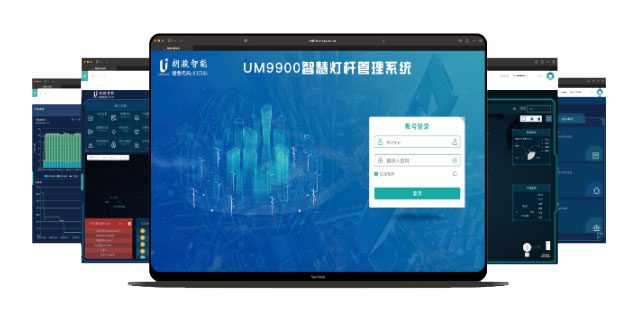Application of ZigBee Communication in Remote Management and Automated Control
Introduction
Modern lighting systems aren’t just about turning lights on and off anymore. They adjust brightness automatically and report faults on their own. They also save energy without manual effort. At the heart of this evolution is ZigBee. It is a low-power wireless communication technology. It is built for intelligent control.
But how exactly does ZigBee make lighting smarter? And where does photocell technology come in?
In this guide, we’ll explore how ZigBee brings real convenience and automation to lighting systems, with a close look at four powerful functions: remote command control, real-time device monitoring, fault detection, and operational efficiency.
Let’s walk through each of these step by step.

How Does ZigBee Enable Remote Command Control in Lighting Systems?
Managing lights one by one is a thing of the past. With ZigBee, you don’t have to be close to the lights that you want to control. You can control street lights from far away with just a few clicks. If you run a city or a corporate building, you can manage all the outdoor lights remotely.
Remote command control means that lighting schedules can run automatically. You can adjust brightness based on time or weather. Entire zones can be turned on or off from a central dashboard. That’s the power of ZigBee working behind the scenes.
In combination with a photocell sensor that detects daylight levels, your lighting system becomes responsive, intuitive, and energy-efficient — adjusting itself automatically to fit its environment.
Real-Life Benefits:
ZigBee’s remote control allows:
- Brightness and power state adjustments.
- Scheduled automation.
- Zone-based lighting control.
How Does ZigBee Support Real-Time Device Status Monitoring?
Ever wish you could know when a light is about to fail—before it actually does? With ZigBee-enabled systems, you can.
ZigBee lets lighting controllers send data all the time. They share information about how each light performs. Voltage levels, power consumption, and even temperature can all be tracked in real time. That means you don’t have to wait until a light goes dark. You can notice when something is wrong.
This is where photocell lighting sensors play a key role. They detect the surrounding light and adjust brightness accordingly. But with ZigBee, their readings can also be monitored centrally, giving a clear picture of how the entire lighting network is performing.
This proactive status monitoring leads to smarter decisions and fewer surprises.
Example Scenario Table:
Status Monitored | Importance |
Voltage Fluctuations | Prevents short circuits or overloading |
Power Consumption | Tracks energy savings |
Light Intensity Levels | Detects dimming or brightness irregularities |
With ZigBee + light photocell sensor, your system doesn’t just work — it thinks.

How Does ZigBee Help Detect and Fix Lighting Faults Remotely?
When lights fail, the first challenge is often just knowing something’s gone wrong. But ZigBee changes that.
Instead of relying on visual checks or complaints, ZigBee-enabled lights can report faults the moment they occur. Whether it’s a voltage drop, a disconnected wire, or a photocell switch malfunction, the system sends a signal straight to the control center.
Even better, these faults come with details—location, error code, and status—which makes scheduling repairs fast and accurate. For cities managing hundreds or thousands of street lights, this is a game-changer.
This type of self-reporting cuts downtime dramatically. You won’t waste time sending someone to check if a light is really broken. And your repair crew shows up knowing exactly what tools they need.
Why This Matters:
Benefit | Description |
Reduced Downtime | Lights get fixed faster, ensuring public safety |
Preventive Maintenance | Detects issues before full failure |
Resource Optimization | Only send maintenance when necessary |
Pair this with photoelectric sensor capabilities, and you’ve got a system that doesn’t just light your path—it looks after itself.
How Does ZigBee Improve Operational Efficiency and Reduce Maintenance?
Maintaining lights across a city, warehouse, or industrial zone used to mean routine site visits and guesswork. But not anymore.
ZigBee allows your lighting system to be managed remotely and proactively. Instead of checking lights one by one, your team gets live updates on everything—brightness levels, photocell activity, energy use, and potential errors.
What does that mean? Fewer site visits. Less manual work. More time focusing on improvements.
Plus, when combined with smart components like a Zhaga socket, firmware upgrades or lighting profile changes can be done remotely. No climbing ladders. No rewiring.
This saves:
● Labor hours.
● Operational costs.
● Downtime.
And it boosts:
● Lighting reliability.
● Safety.
● Sustainability.
Operational Impact Overview:
Area | Traditional System | ZigBee + Photocell Lighting |
On-site visits needed | Frequent | Rare |
Adjust schedule remotely | Not Possible | Instant |
Real-time diagnostics | No | Yes |
If you manage photocell street light systems, you need this automation. If you work on large public lighting projects, you need it too. It is not a luxury—it is a must.

What Are the Key Benefits of Integrating ZigBee with Photocell Control?
Smart lighting doesn’t stop at wireless control. It thrives when ZigBee communication is paired with photocell control to automate lighting based on real-world conditions.
Photocell sensors detect daylight, so your lights turn on only when they’re needed — like when it gets dark or cloudy. Combine this with ZigBee’s communication backbone, and now the lighting system not only knows when to act but also reports what it’s doing and listens to your remote commands.
You get:
● Lights that turn on automatically at dusk.
● Central dashboards that show power stats.
● Alerts when sensors or lights behave abnormally.
● Energy savings month after month.
Integration Use Case Table:
Technology Used | Function |
ZigBee | Wireless communication and control |
Photocell Sensor | Detects daylight and triggers light changes |
Remote Controller Switch | Allows cloud or app-based operation |
For modern cities or campuses, lighting control has to be dynamic. A photocell LED street light setup with ZigBee creates an adaptive, automated system that feels like it runs itself.
Still on the fence about adopting ZigBee?
Think about this: if your lights could think for themselves, report problems before they happen, and save energy without any extra effort from your team — wouldn’t you want that?
That’s exactly what ZigBee + photocell control delivers. It’s about remote control, smarter fault detection, better energy use, and a longer lifespan for your lighting hardware.
If you’re in charge of outdoor light sensor switch setups, parking lots, campuses, or street lights, this combo isn’t just a smart upgrade. It’s the standard you should aim for.
Check out Long-Join’s ZigBee Photocell Lighting Controllers.
Conclusion
ZigBee and photocell technology make smart lighting systems more responsive. They also keep these systems cost-effective and easy to manage. Remote control and real-time fault detection work together. Their synergy transforms outdoor and industrial lighting, making it smarter, faster, and greener.
External Links:
* https://www.sciencedirect.com/topics/engineering/photocell
* https://en.wikipedia.org/wiki/Zigbee
* https://lightingcontrolsassociation.org/






